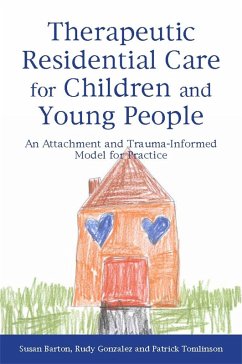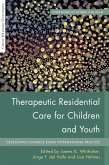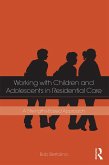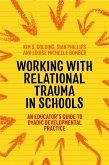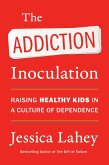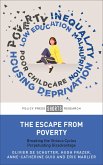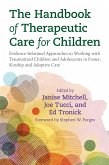Patrick Tomlinson, Rudy Gonzalez, Susan Barton
Therapeutic Residential Care for Children and Young People (eBook, ePUB)
An Attachment and Trauma-Informed Model for Practice
36,95 €
36,95 €
inkl. MwSt.
Sofort per Download lieferbar

18 °P sammeln
36,95 €
Als Download kaufen

36,95 €
inkl. MwSt.
Sofort per Download lieferbar

18 °P sammeln
Jetzt verschenken
Alle Infos zum eBook verschenken
36,95 €
inkl. MwSt.
Sofort per Download lieferbar
Alle Infos zum eBook verschenken

18 °P sammeln
Patrick Tomlinson, Rudy Gonzalez, Susan Barton
Therapeutic Residential Care for Children and Young People (eBook, ePUB)
An Attachment and Trauma-Informed Model for Practice
- Format: ePub
- Merkliste
- Auf die Merkliste
- Bewerten Bewerten
- Teilen
- Produkt teilen
- Produkterinnerung
- Produkterinnerung

Bitte loggen Sie sich zunächst in Ihr Kundenkonto ein oder registrieren Sie sich bei
bücher.de, um das eBook-Abo tolino select nutzen zu können.
Hier können Sie sich einloggen
Hier können Sie sich einloggen
Sie sind bereits eingeloggt. Klicken Sie auf 2. tolino select Abo, um fortzufahren.

Bitte loggen Sie sich zunächst in Ihr Kundenkonto ein oder registrieren Sie sich bei bücher.de, um das eBook-Abo tolino select nutzen zu können.
Children and young people in care who have been traumatized need a therapeutic environment where they can heal and which meets their emotional and developmental needs.
This book provides a model of care for traumatized children and young people, based on theory and practice experience pioneered at the Lighthouse Foundation, Australia. The authors explain the impact of trauma on child development, drawing on psychodynamic, attachment and neurobiological trauma theories. The practical aspects of undertaking therapeutic care are then outlined, covering everything from forming therapeutic…mehr
- Geräte: eReader
- mit Kopierschutz
- eBook Hilfe
- Größe: 3.29MB
Andere Kunden interessierten sich auch für
![Therapeutic Residential Care for Children and Youth (eBook, ePUB) Therapeutic Residential Care for Children and Youth (eBook, ePUB)]() Therapeutic Residential Care for Children and Youth (eBook, ePUB)36,95 €
Therapeutic Residential Care for Children and Youth (eBook, ePUB)36,95 €![Working with Children and Adolescents in Residential Care (eBook, ePUB) Working with Children and Adolescents in Residential Care (eBook, ePUB)]() Bob BertolinoWorking with Children and Adolescents in Residential Care (eBook, ePUB)54,95 €
Bob BertolinoWorking with Children and Adolescents in Residential Care (eBook, ePUB)54,95 €![Working with Relational Trauma in Schools (eBook, ePUB) Working with Relational Trauma in Schools (eBook, ePUB)]() Louise Michelle BombèrWorking with Relational Trauma in Schools (eBook, ePUB)21,95 €
Louise Michelle BombèrWorking with Relational Trauma in Schools (eBook, ePUB)21,95 €![Online Harms and Cybertrauma (eBook, ePUB) Online Harms and Cybertrauma (eBook, ePUB)]() Catherine KnibbsOnline Harms and Cybertrauma (eBook, ePUB)27,95 €
Catherine KnibbsOnline Harms and Cybertrauma (eBook, ePUB)27,95 €![The Addiction Inoculation (eBook, ePUB) The Addiction Inoculation (eBook, ePUB)]() Jessica LaheyThe Addiction Inoculation (eBook, ePUB)10,99 €
Jessica LaheyThe Addiction Inoculation (eBook, ePUB)10,99 €![The Escape from Poverty (eBook, ePUB) The Escape from Poverty (eBook, ePUB)]() Olivier De SchutterThe Escape from Poverty (eBook, ePUB)0,00 €
Olivier De SchutterThe Escape from Poverty (eBook, ePUB)0,00 €![The Handbook of Therapeutic Care for Children (eBook, ePUB) The Handbook of Therapeutic Care for Children (eBook, ePUB)]() The Handbook of Therapeutic Care for Children (eBook, ePUB)32,95 €
The Handbook of Therapeutic Care for Children (eBook, ePUB)32,95 €-
-
-
Children and young people in care who have been traumatized need a therapeutic environment where they can heal and which meets their emotional and developmental needs.
This book provides a model of care for traumatized children and young people, based on theory and practice experience pioneered at the Lighthouse Foundation, Australia. The authors explain the impact of trauma on child development, drawing on psychodynamic, attachment and neurobiological trauma theories. The practical aspects of undertaking therapeutic care are then outlined, covering everything from forming therapeutic relationships to the importance of the home environment and daily routines. The book considers the totality of the child's experience at the individual, group, organization and community levels and argues that attention to all of these is essential if the child is to achieve wellness. Case material from both children and carers are used throughout to illustrate both the impact of trauma and how children have been helped to recovery through therapeutic care.
This book will provide anyone caring for traumatized children and young people in a residential setting with both the understanding and the practical knowledge to help children recover. It will be essential reading for managers and decision-makers responsible for looked after children, child care workers such as residential and foster carers, youth workers, social workers, mental health workers and child welfare academics.
This book provides a model of care for traumatized children and young people, based on theory and practice experience pioneered at the Lighthouse Foundation, Australia. The authors explain the impact of trauma on child development, drawing on psychodynamic, attachment and neurobiological trauma theories. The practical aspects of undertaking therapeutic care are then outlined, covering everything from forming therapeutic relationships to the importance of the home environment and daily routines. The book considers the totality of the child's experience at the individual, group, organization and community levels and argues that attention to all of these is essential if the child is to achieve wellness. Case material from both children and carers are used throughout to illustrate both the impact of trauma and how children have been helped to recovery through therapeutic care.
This book will provide anyone caring for traumatized children and young people in a residential setting with both the understanding and the practical knowledge to help children recover. It will be essential reading for managers and decision-makers responsible for looked after children, child care workers such as residential and foster carers, youth workers, social workers, mental health workers and child welfare academics.
Dieser Download kann aus rechtlichen Gründen nur mit Rechnungsadresse in A, D ausgeliefert werden.
Produktdetails
- Produktdetails
- Verlag: Jessica Kingsley Publishers
- Seitenzahl: 288
- Erscheinungstermin: 15. September 2011
- Englisch
- ISBN-13: 9780857005380
- Artikelnr.: 38229692
- Verlag: Jessica Kingsley Publishers
- Seitenzahl: 288
- Erscheinungstermin: 15. September 2011
- Englisch
- ISBN-13: 9780857005380
- Artikelnr.: 38229692
- Herstellerkennzeichnung Die Herstellerinformationen sind derzeit nicht verfügbar.
Susan Barton is founder of the Lighthouse Foundation, Australia, which provides therapeutic residential care for traumatized and homeless children. After fostering children for several years, she founded the charity in 1991 in order to extend to more children in need the therapeutic family model of care that she had started to develop. She has won numerous awards for her work with homeless and traumatized children. Rudy Gonzalez is Director of Care Service at the Lighthouse Foundation. He has worked as a family counsellor and case manager, a psychologist in a forensic setting undertaking therapeutic work with male violent offenders both individually and in a therapeutic community, and has worked as a psychologist with traumatized children. Patrick Tomlinson is a social care consultant. He has many years' experience as a practitioner, manager and director of therapeutic child care services, and is author of several books on therapeutic child care.
Foreword. Acknowledgements. Authors' Note. Introduction. What is child
abuse and neglect? The cost of abuse. The need for early intervention,
treatment and prevention. 1. The Importance of a Theoretical Base. The
relationship between theory and practice. Theory in the caring professions.
Psychodynamic thinking. Psychodynamic concepts. The relationship between
the organization and therapeutic task. The treatment approach. Attachment
and trauma-informed theories. The influence of Winnicott on therapeutic
residential care. Individual, family, community and societal wellness
theory. Conclusion. 2. Trauma-Informed Practice. How traumatization
develops in childhood. Trauma causes hyperarousal and fear in children.
Childhood trauma reduces the brain's capacity to think and regulate
emotions. Trauma disconnects children from relational resources. Trauma
restricts the attention capacity of children. Trauma-based behaviour has a
functional purpose. Trauma restricts children's ability to deal with
change. Trauma undermines identity formation in children. Trauma affects
social skills development and impacts on peer relationships. The impact of
trauma on the child's internal working model. Relationship and attachment
difficulties. Physical wellbeing. The basics of trauma treatment. 3.
Therapeutic Relationships. Beginnings. Information gathering and
assessment. The intake process. Attachment. Secure base. Commitment.
Continuity of care. Working with loss. Role modelling. Personal growth.
Creating capacity for relationship building: one-to-one time with children.
Unique needs. The importance of the relationship when challenging
behaviour. Challenging behaviour as a sign of hope. The role of touch in
the healing process. Consequences vs punishment. Promoting responsible
children (empowerment processes). Participation of children and young
people in the organization. 4. Demands and Rewards of the Work: Staff
Support. Working with challenging and aggressive behaviour. Physical and
emotional wellbeing. Working with anxiety. Communication challenges.
Therapeutic supervision: working with feelings. Safety and containment. The
impact of trauma work on our own memories and experiences of childhood. 5.
The Home Environment. Home aesthetics. Encouraging play and curiosity.
Privacy and security. 6. The Holding Environment and Daily Routines.
Routines, limits and anchor points. Daily programme. Use of television and
computers. Free time. The importance of food in the healing process.
Bedtime and waking routines. Play. Celebrations as a sense of belonging. 7.
The Organization and Community. The language of the organization. Trauma
re-enactment and its impact on the organization. Management and the
therapeutic task. The lighthouse foundation as an open system. Leadership.
Authority. Managing change. The organization's vision. Sense of community.
Sense of family and home. Organization as family. Local community.
Community committees as a containing membrane. Collective wellness. 8.
Group Processes. 'I feel like saying' process. Shared history: culture
passed on through stories. Strong culture. Child safety. Reflective
practice. Emotional intelligence. Emotional wellness. Transparency and
openness. Family meetings. Combined family meetings. Whole family meetings.
Youth forums. Clinical supervision (relationship between carers). Clinical
peer supervision (carers' meeting). Mediation processes. 9. Moving On:
Transitions, Aftercare and Outreach. Transition as a separation experience.
Life membership. Transitional planning and transitional objects. Transition
celebrations. Stepping stones: transitional programmes. Assessing readiness
for transition. Carer relationship beyond transition. Aftercare programme.
Outreach. Children returning to work with the organization. 10.
Outcomes-Based Practice. Outcomes-based approaches. The need for evidence.
Measuring outcomes. Difficulties in measuring outcomes. Potential benefits
and value of developing an outcomes-based approach. Appendix 1 Susan's
Story. Appendix 2 The Lighthouse Therapeutic Family Model of Care. About
the Authors. References. Index.
abuse and neglect? The cost of abuse. The need for early intervention,
treatment and prevention. 1. The Importance of a Theoretical Base. The
relationship between theory and practice. Theory in the caring professions.
Psychodynamic thinking. Psychodynamic concepts. The relationship between
the organization and therapeutic task. The treatment approach. Attachment
and trauma-informed theories. The influence of Winnicott on therapeutic
residential care. Individual, family, community and societal wellness
theory. Conclusion. 2. Trauma-Informed Practice. How traumatization
develops in childhood. Trauma causes hyperarousal and fear in children.
Childhood trauma reduces the brain's capacity to think and regulate
emotions. Trauma disconnects children from relational resources. Trauma
restricts the attention capacity of children. Trauma-based behaviour has a
functional purpose. Trauma restricts children's ability to deal with
change. Trauma undermines identity formation in children. Trauma affects
social skills development and impacts on peer relationships. The impact of
trauma on the child's internal working model. Relationship and attachment
difficulties. Physical wellbeing. The basics of trauma treatment. 3.
Therapeutic Relationships. Beginnings. Information gathering and
assessment. The intake process. Attachment. Secure base. Commitment.
Continuity of care. Working with loss. Role modelling. Personal growth.
Creating capacity for relationship building: one-to-one time with children.
Unique needs. The importance of the relationship when challenging
behaviour. Challenging behaviour as a sign of hope. The role of touch in
the healing process. Consequences vs punishment. Promoting responsible
children (empowerment processes). Participation of children and young
people in the organization. 4. Demands and Rewards of the Work: Staff
Support. Working with challenging and aggressive behaviour. Physical and
emotional wellbeing. Working with anxiety. Communication challenges.
Therapeutic supervision: working with feelings. Safety and containment. The
impact of trauma work on our own memories and experiences of childhood. 5.
The Home Environment. Home aesthetics. Encouraging play and curiosity.
Privacy and security. 6. The Holding Environment and Daily Routines.
Routines, limits and anchor points. Daily programme. Use of television and
computers. Free time. The importance of food in the healing process.
Bedtime and waking routines. Play. Celebrations as a sense of belonging. 7.
The Organization and Community. The language of the organization. Trauma
re-enactment and its impact on the organization. Management and the
therapeutic task. The lighthouse foundation as an open system. Leadership.
Authority. Managing change. The organization's vision. Sense of community.
Sense of family and home. Organization as family. Local community.
Community committees as a containing membrane. Collective wellness. 8.
Group Processes. 'I feel like saying' process. Shared history: culture
passed on through stories. Strong culture. Child safety. Reflective
practice. Emotional intelligence. Emotional wellness. Transparency and
openness. Family meetings. Combined family meetings. Whole family meetings.
Youth forums. Clinical supervision (relationship between carers). Clinical
peer supervision (carers' meeting). Mediation processes. 9. Moving On:
Transitions, Aftercare and Outreach. Transition as a separation experience.
Life membership. Transitional planning and transitional objects. Transition
celebrations. Stepping stones: transitional programmes. Assessing readiness
for transition. Carer relationship beyond transition. Aftercare programme.
Outreach. Children returning to work with the organization. 10.
Outcomes-Based Practice. Outcomes-based approaches. The need for evidence.
Measuring outcomes. Difficulties in measuring outcomes. Potential benefits
and value of developing an outcomes-based approach. Appendix 1 Susan's
Story. Appendix 2 The Lighthouse Therapeutic Family Model of Care. About
the Authors. References. Index.
Foreword. Acknowledgements. Authors' Note. Introduction. What is child
abuse and neglect? The cost of abuse. The need for early intervention,
treatment and prevention. 1. The Importance of a Theoretical Base. The
relationship between theory and practice. Theory in the caring professions.
Psychodynamic thinking. Psychodynamic concepts. The relationship between
the organization and therapeutic task. The treatment approach. Attachment
and trauma-informed theories. The influence of Winnicott on therapeutic
residential care. Individual, family, community and societal wellness
theory. Conclusion. 2. Trauma-Informed Practice. How traumatization
develops in childhood. Trauma causes hyperarousal and fear in children.
Childhood trauma reduces the brain's capacity to think and regulate
emotions. Trauma disconnects children from relational resources. Trauma
restricts the attention capacity of children. Trauma-based behaviour has a
functional purpose. Trauma restricts children's ability to deal with
change. Trauma undermines identity formation in children. Trauma affects
social skills development and impacts on peer relationships. The impact of
trauma on the child's internal working model. Relationship and attachment
difficulties. Physical wellbeing. The basics of trauma treatment. 3.
Therapeutic Relationships. Beginnings. Information gathering and
assessment. The intake process. Attachment. Secure base. Commitment.
Continuity of care. Working with loss. Role modelling. Personal growth.
Creating capacity for relationship building: one-to-one time with children.
Unique needs. The importance of the relationship when challenging
behaviour. Challenging behaviour as a sign of hope. The role of touch in
the healing process. Consequences vs punishment. Promoting responsible
children (empowerment processes). Participation of children and young
people in the organization. 4. Demands and Rewards of the Work: Staff
Support. Working with challenging and aggressive behaviour. Physical and
emotional wellbeing. Working with anxiety. Communication challenges.
Therapeutic supervision: working with feelings. Safety and containment. The
impact of trauma work on our own memories and experiences of childhood. 5.
The Home Environment. Home aesthetics. Encouraging play and curiosity.
Privacy and security. 6. The Holding Environment and Daily Routines.
Routines, limits and anchor points. Daily programme. Use of television and
computers. Free time. The importance of food in the healing process.
Bedtime and waking routines. Play. Celebrations as a sense of belonging. 7.
The Organization and Community. The language of the organization. Trauma
re-enactment and its impact on the organization. Management and the
therapeutic task. The lighthouse foundation as an open system. Leadership.
Authority. Managing change. The organization's vision. Sense of community.
Sense of family and home. Organization as family. Local community.
Community committees as a containing membrane. Collective wellness. 8.
Group Processes. 'I feel like saying' process. Shared history: culture
passed on through stories. Strong culture. Child safety. Reflective
practice. Emotional intelligence. Emotional wellness. Transparency and
openness. Family meetings. Combined family meetings. Whole family meetings.
Youth forums. Clinical supervision (relationship between carers). Clinical
peer supervision (carers' meeting). Mediation processes. 9. Moving On:
Transitions, Aftercare and Outreach. Transition as a separation experience.
Life membership. Transitional planning and transitional objects. Transition
celebrations. Stepping stones: transitional programmes. Assessing readiness
for transition. Carer relationship beyond transition. Aftercare programme.
Outreach. Children returning to work with the organization. 10.
Outcomes-Based Practice. Outcomes-based approaches. The need for evidence.
Measuring outcomes. Difficulties in measuring outcomes. Potential benefits
and value of developing an outcomes-based approach. Appendix 1 Susan's
Story. Appendix 2 The Lighthouse Therapeutic Family Model of Care. About
the Authors. References. Index.
abuse and neglect? The cost of abuse. The need for early intervention,
treatment and prevention. 1. The Importance of a Theoretical Base. The
relationship between theory and practice. Theory in the caring professions.
Psychodynamic thinking. Psychodynamic concepts. The relationship between
the organization and therapeutic task. The treatment approach. Attachment
and trauma-informed theories. The influence of Winnicott on therapeutic
residential care. Individual, family, community and societal wellness
theory. Conclusion. 2. Trauma-Informed Practice. How traumatization
develops in childhood. Trauma causes hyperarousal and fear in children.
Childhood trauma reduces the brain's capacity to think and regulate
emotions. Trauma disconnects children from relational resources. Trauma
restricts the attention capacity of children. Trauma-based behaviour has a
functional purpose. Trauma restricts children's ability to deal with
change. Trauma undermines identity formation in children. Trauma affects
social skills development and impacts on peer relationships. The impact of
trauma on the child's internal working model. Relationship and attachment
difficulties. Physical wellbeing. The basics of trauma treatment. 3.
Therapeutic Relationships. Beginnings. Information gathering and
assessment. The intake process. Attachment. Secure base. Commitment.
Continuity of care. Working with loss. Role modelling. Personal growth.
Creating capacity for relationship building: one-to-one time with children.
Unique needs. The importance of the relationship when challenging
behaviour. Challenging behaviour as a sign of hope. The role of touch in
the healing process. Consequences vs punishment. Promoting responsible
children (empowerment processes). Participation of children and young
people in the organization. 4. Demands and Rewards of the Work: Staff
Support. Working with challenging and aggressive behaviour. Physical and
emotional wellbeing. Working with anxiety. Communication challenges.
Therapeutic supervision: working with feelings. Safety and containment. The
impact of trauma work on our own memories and experiences of childhood. 5.
The Home Environment. Home aesthetics. Encouraging play and curiosity.
Privacy and security. 6. The Holding Environment and Daily Routines.
Routines, limits and anchor points. Daily programme. Use of television and
computers. Free time. The importance of food in the healing process.
Bedtime and waking routines. Play. Celebrations as a sense of belonging. 7.
The Organization and Community. The language of the organization. Trauma
re-enactment and its impact on the organization. Management and the
therapeutic task. The lighthouse foundation as an open system. Leadership.
Authority. Managing change. The organization's vision. Sense of community.
Sense of family and home. Organization as family. Local community.
Community committees as a containing membrane. Collective wellness. 8.
Group Processes. 'I feel like saying' process. Shared history: culture
passed on through stories. Strong culture. Child safety. Reflective
practice. Emotional intelligence. Emotional wellness. Transparency and
openness. Family meetings. Combined family meetings. Whole family meetings.
Youth forums. Clinical supervision (relationship between carers). Clinical
peer supervision (carers' meeting). Mediation processes. 9. Moving On:
Transitions, Aftercare and Outreach. Transition as a separation experience.
Life membership. Transitional planning and transitional objects. Transition
celebrations. Stepping stones: transitional programmes. Assessing readiness
for transition. Carer relationship beyond transition. Aftercare programme.
Outreach. Children returning to work with the organization. 10.
Outcomes-Based Practice. Outcomes-based approaches. The need for evidence.
Measuring outcomes. Difficulties in measuring outcomes. Potential benefits
and value of developing an outcomes-based approach. Appendix 1 Susan's
Story. Appendix 2 The Lighthouse Therapeutic Family Model of Care. About
the Authors. References. Index.
